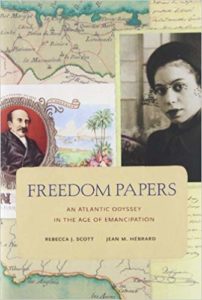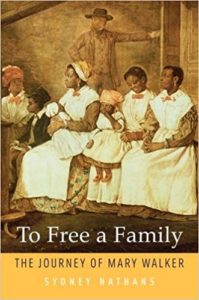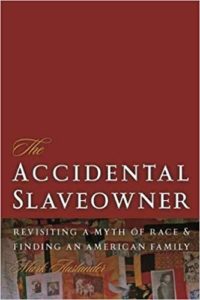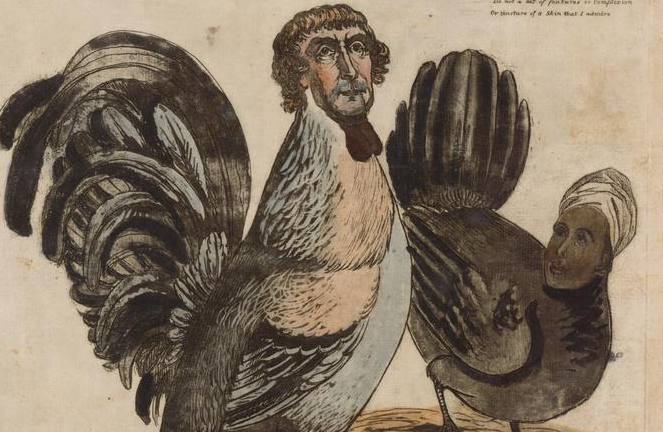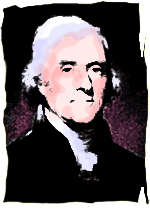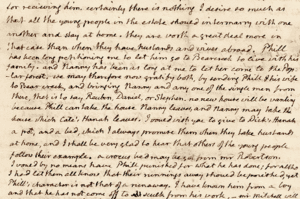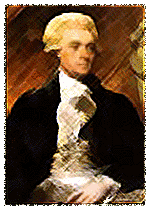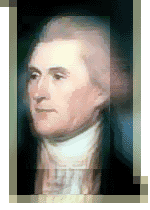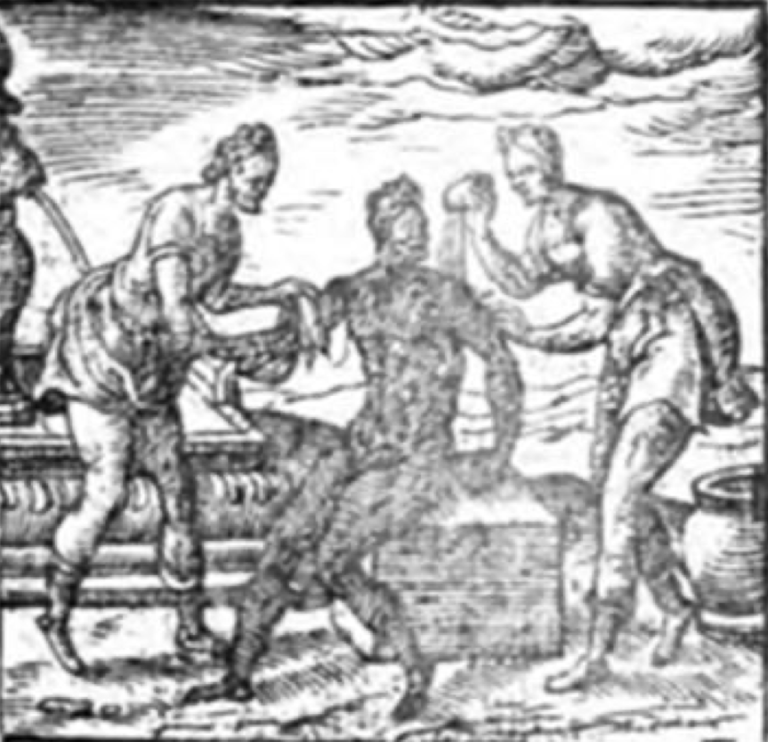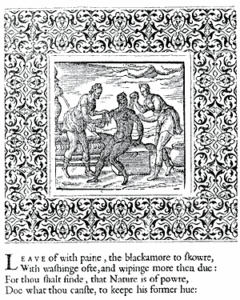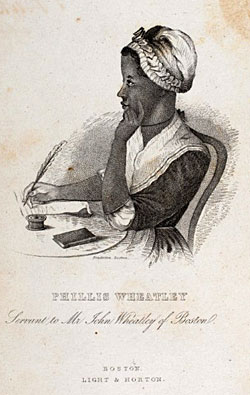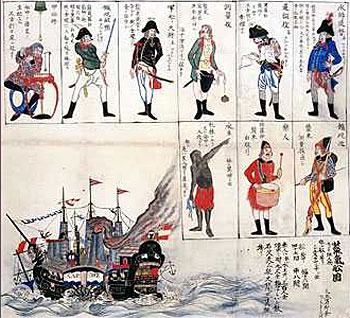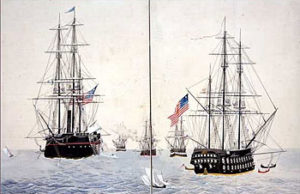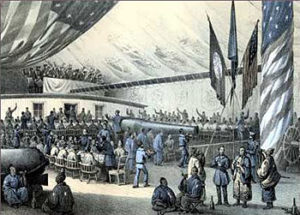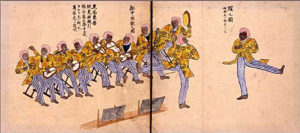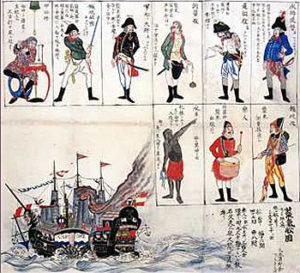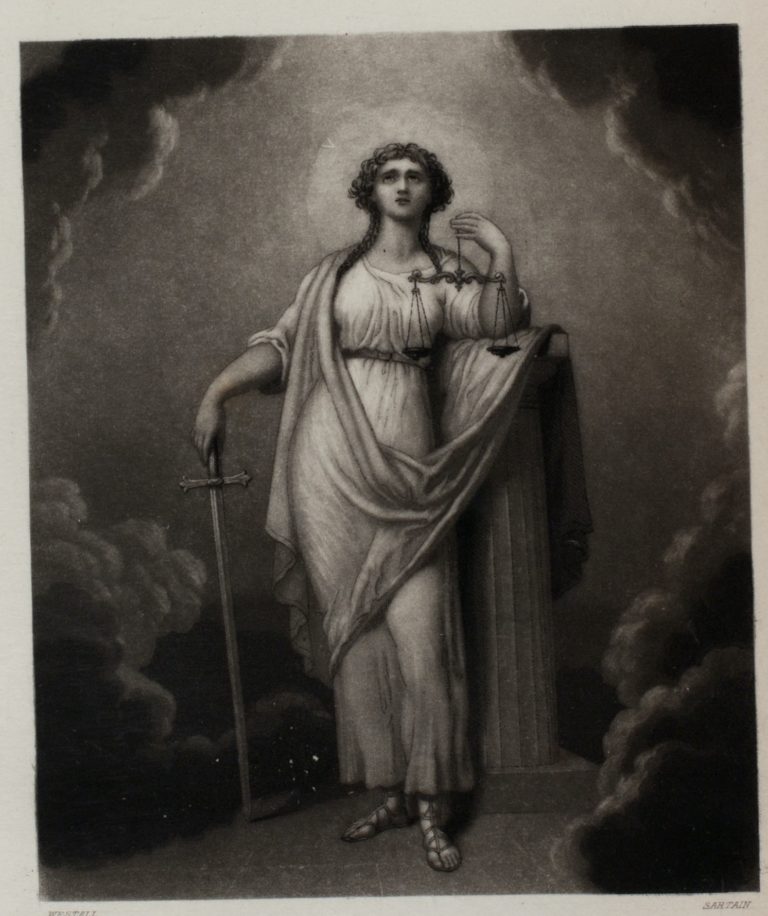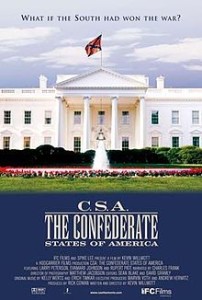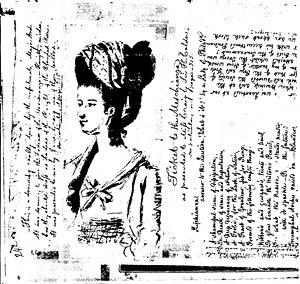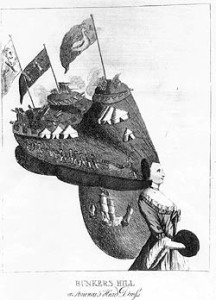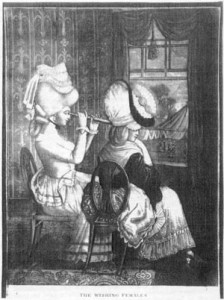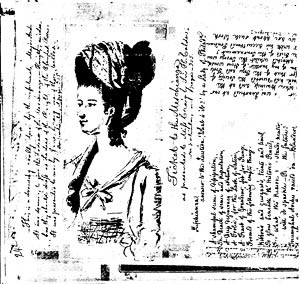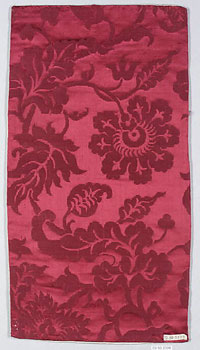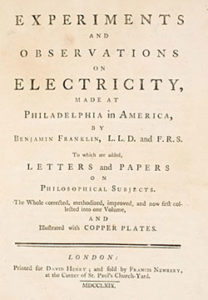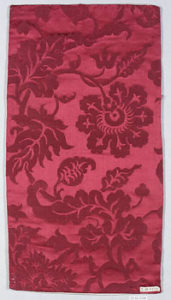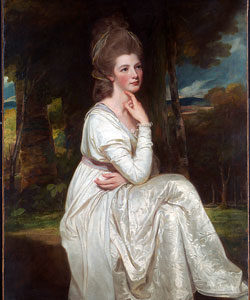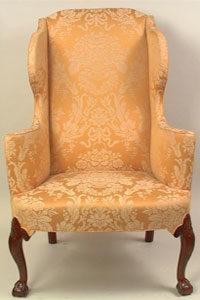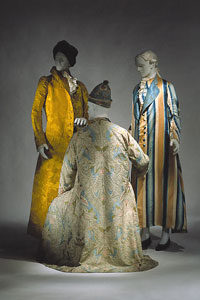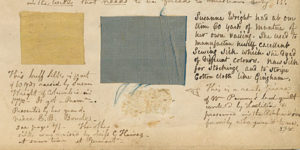The (Not So) Distant Kinship of Race, Family, and Law in the Struggle for Freedom

For the better part of a century, social historians have wrestled with the problem of the one and the many—that is to say, the problem of properly situating the lives and agency of individuals in the response to and the shaping of broader historical currents. Social historians in the twentieth century, in Europe and the United States, sought to provide a corrective to the overemphasis on powerful men in the making of Western society through the systematic analysis of populations, communities, and group behaviors—with a particular desire to understand the lives and agency of those on the margins of society. By the 1990s, however, reaction against quantitative approaches, partly a response to the linguistic turn, set the stage for the shift in analytical modes and perspectives that historians have employed since.
Freedom Papers, To Free a Family, and The Accidental Slaveowner are representative of the ways scholars today are employing more nuanced approaches to the problem of the one and the many. These works also build upon several decades of research on migration, family, and kinship ties, and the work of Atlantic, global, and transnational historians, who’ve called greater attention to lives and historical processes that spill across any number of political, economic, and cultural boundaries. Again and again, the men and women in these works confound historians’ usual categories for understanding and explaining their actions and motivations.
These works further highlight the often close relationship between migration choices and personal, often far-flung, networks and pre-existing relationships.
In novel ways, all of these authors situate the agency of specific men, women, and children within the broader constraints imposed by big events. In Freedom Papers, Rebecca J. Scott and Jean M. Hébrard provide a trans-Atlantic and trans-generational account of the Vincent and Tinchant families, whose origins began with the capture and enslavement in 1788 of a West African woman called Rosalie. Sold into slavery in French Saint-Domingue, a colony teetering on the precipice of revolution and civil war, Rosalie’s remarkable life, and the lives of her children, ultimately connected “three of the great antiracist struggles of the ‘long nineteenth century'” (the Haitian Revolution, the U.S. Civil War and Reconstruction, and the Cuban War of Independence). Freedom Papers is a human story of family and migration that began “with a passage from Senegambia to Saint-Domingue in the late eighteenth century” and “continued on to Santiago de Cuba, New Orleans, Port-au-Prince, Pau, Paris, Antwerp, Veracruz, and Mobile, with several returns to Louisiana and Belgium” (2-3). As such, it is a remarkable feat of scholarship, grounded in the necessity of locating a widely dispersed set of extant sources that offer glimpses into the experiences of men and women who literally criss-crossed multiple imperial, national, racial, legal, and socio-political boundaries.
In The Accidental Slaveowner: Revisiting a Myth of Race and Finding an American Family, Mark Auslander unpacks both the historical reality and the “mythic imagination” that has, to the present day, surrounded the story of Bishop James Osgood Andrew, the first president of the Board of Trustees at Emory College, the forerunner of today’s Emory University, and Andrew’s slaves—including Catherine Boyd (or “Miss Kitty,” as most white authors have referred to her), who is the primary subject of the book. Among the narrative threads developed and nurtured by whites for more than a century and a half was that the “loyal” slave Kitty had preferred slavery to freedom, making Bishop Andrew an “accidental slaveowner” and thus sparking the controversy that led to the 1844 schism of the Methodist Episcopal Church into northern and southern branches. An important contribution to the study of historical memory, the story unfolds against the backdrop of abolitionist struggles, Civil War and Reconstruction, and spans the Jim Crow and Civil Rights eras to recent decades.
Sydney Nathans’ To Free a Family: The Journey of Mary Walker is a detailed investigation into the life and struggles of Mary Walker, who fled enslavement in North Carolina and, with the help of abolitionist friends and patrons in Philadelphia and Cambridge, Massachusetts, sought to purchase the freedom of the mother and the two children she had left behind. The years leading to her decision to flee (1844-48) coincided with the resurgence of slavery on the national political scene and the 1847 passage of a Pennsylvania law that allowed slaves entering the state to claim their freedom. Having fled to Philadelphia with the assistance of local abolitionists, Mary soon found her actions constrained, if not confounded, by the 1850 Fugitive Slave Act, and later, the Civil War. Each of these developments complicated an already fraught situation. According to Nathans, Mary’s case resembled that of more famous female runaways like Sojourner Truth and Harriet Jacobs—who also fled at a crucial moment when no other choice seemed possible, and who, like Mary, worried incessantly about the fate of family members still enslaved. Unlike these women, Nathans argues, “Mary Walker’s experience was a more wrenching, more protracted, and probably more representative struggle than that of [these] ex-slave women whose defiance made them heroines” (3).
Freedom Papers, To Free a Family, and The Accidental Slaveowner are all superb examples of what can be gained when knowledgeable, attentive, and imaginative scholars recognize and seize upon unexpected encounters with historical documents. As Scott and Hébrard realize, the story of Rosalie could never be told within a strict, nation-state framework. It is a quintessential Atlantic World story, and their history of it is a kind of micro-history-in-motion. Their “experiment,” as they call it, “rests on the conviction that the study of a carefully chosen place or event, viewed from very close to the ground, may reveal dynamics that are not visible through the more familiar lens of region or nation.” But they did not set out to tell this particular story. Rather, it was “a chance discovery in the Cuban archives” that led “to the heart of the problem of freedom, and of the phenomena of race, racism, and antiracism.” Through the painstaking research of these two historians, the story of this family evolved into a narrative of “individual and shared choices constrained by slavery, war, and social hierarchy” (5). Similarly, Nathans’ unearthing of Mary Walker’s complex story began with two chance encounters. The first was a reading of Herbert Gutman’s The Black Family in Slavery and Freedom, in which Gutman published an 1859 letter by Mary Walker’s chief patron and sometime employer, the antislavery pastor Peter Lesley. The second and more decisive moment came when Nathans decided to investigate yet another case Gutman had stumbled upon, that of 114 enslaved people sent in 1844 from North Carolina to a cotton plantation in western Alabama. Like the other authors, Nathans faced the issue that very little of the surviving evidence is in Mary’s voice. Yet, delving into the voluminous records of the key people around her, evidence related to Mary proved abundant, if not always ideal.
For his part, Auslander encountered the story of “Miss Kitty” (Catherine Boyd) when he began teaching at Oxford College in 1999. By July 2009, Auslander had nearly given up on the idea of ever knowing anything about Catherine’s descendants when a chance discovery of an 1871 Freedman’s Bank record confirmed that she had indeed married a man named Nathan, and they had indeed had children together. Auslander and his wife immediately set out to find and interview Catherine’s descendants, and suddenly the prospect of a study that did more than trace historical memory became a real possibility. The result is a book that not only pieces together the long misunderstood genealogy of Catherine Boyd and her descendants, but does what David Blight’s influential Race and Reunion did not. Blight’s masterful work revealed how a “segregated historical memory” of the Civil War shaped the political destinies (and racial politics) of whites and blacks during Reconstruction and beyond. But because he limited his analysis to a fifty-year period, one wonders how that history of contested memory went on to shape the long Civil Rights movement, or its continued impact since. By showing how the purposefully selective historical memory of interested whites has shaped hundreds of “Miss Kitty” narratives over 150 years, Auslander (unlike Blight) reveals the historical effect of these narratives on race relations in Oxford to the present day. Integrating detailed historical research with the conceptual tools of structuralism, literary studies, history, and anthropology, Auslander wrote The Accidental Slaveowner as “a critical excavation of the mythologies that still surround American chattel slavery,” with the hope that such an examination might “be mutually enriching and transformative, for the descendants of the enslaved and the heirs of white privilege”—that it might help to “free all of us from their enduring hold and help us chart a new and more democratic path” (4).
Each in their own way, Freedom Papers and To Free a Family get at the problem of freedom under seriously constrained conditions. In the first instance, Scott and Hébrard show the highly contingent nature of freedom for the formerly enslaved when one nation’s general emancipation is not widely accepted. In the second, Nathans shows the fragility of one runaway’s freedom in a nation where slavery and fugitive slave laws remain the law of the land. Both particularly demonstrate how the formerly enslaved sought to either preserve or establish their and their family’s “legal” right to free status through explicit pursuit of documentation. Despite the first French emancipation of February 4, 1794, and the extension of both legal and de facto freedom to the entire island of Saint-Domingue in 1798—both occasions brought about as a direct, albeit contingent, result of the revolution in Saint-Domingue (present-day Haiti)—freedpersons wishing to flee the island nearly always risked re-enslavement. When Rosalie fled the southern peninsula of Saint-Domingue for Cuba in 1803, as the war with Napoleon’s expeditionary forces raged, she deposited a set of documents with French officials in Santiago de Cuba. Although these documents, technically, did not establish her legal right to freedom, these were Rosalie’s “freedom papers,” which also documented her African origins and former enslavement. Much of the book focuses on Rosalie’s efforts to secure improved freedom papers for herself and her children—an extremely complicated and protracted process. Along the way, Scott and Hébrard repeatedly demonstrate the highly contingent nature of freedom and slavery in Rosalie’s revolutionary Atlantic. The possibility of re-enslavement reared its head again with the expulsion of the French from Cuba in 1809, and the arrival of nearly 10,000 refugees in the Gulf of Mexico, particularly in New Orleans. Despite the legal prohibition on the importation of slaves, Governor Claiborne “improvised” an exemption, allowing French refugee slaveholders to bring several thousand slaves into U.S. territory. What remains unknown, this work suggests, is how many of these 3,000 “slaves” were in fact re-enslavements of men, women, and children who had lived free prior to their arrival in Louisiana, but were claimed to be the property of a French planter: “The burden of proof fell on the individual claiming to be free; there was no presumption that abolition in Saint-Domingue in 1793-1794 had effected a general transformation in status.” Hence Rosalie’s pressing concern for securing “freedom papers.” The line between re-enslavement and freedom was, as Scott and Hébrard show, “as much a matter of circumstance as of law” (70).
The risk of capture and re-enslavement was likewise a pressing concern for Mary Walker, and she worried about it constantly. Soon after her flight, Mary was taken in by Peter and Susan Lesley of Cambridge, Massachusetts. This would be a first real test to the lay pastor and his wife, who now moved from merely espousing abolitionist sympathies to actually assisting and harboring a fugitive slave. The Lesleys quickly discovered the difficulties of extending a helping hand in the face of competing state and federal the law. Friends helped, but initially none could or would take Mary as an employee. For her part, Mary sought out affidavits from allies in Philadelphia in an attempt to document her freedom under the Pennsylvania law of 1847, and asked Peter Lesley to secure legal opinion on whether the affidavits she had gathered would protect her in Massachusetts. An antislavery lawyer from New York informed Lesley that the clause in the Fugitive Slave Law which provided for the (relatively easy) establishment of claims by owners would likely override the Pennsylvania Law, and thus her master’s ability to reclaim her as his property. Despite the 1847 Pennsylvania law which may have induced her flight, her freedom remained tenuous.
In The Accidental Slaveowner, by contrast, it is Auslander who assiduously pursues documentation in order to challenge longstanding myths. For over a century, proslavery and neo-Confederate whites have worked tirelessly, producing hundreds of “Miss Kitty” narratives propagating the idea of the “loyal slave.” Analyzing George Gilman Smith’s elaborate 1882 account of the controversy, which he included in his biography of Bishop Andrew, Auslander shows how, in such narratives, “Kitty, the slave,” was depicted as “free to make a choice” between the freedom offered (deportation to Liberia) or continued enslavement, “whereas Bishop Andrew, the master, [was] represented as a slave of duty, bound to fulfill the terms of Mrs. Power’s request.” This Mrs. Powers, who supposedly bequeathed “Kitty” to a reluctant Bishop Andrew, turns out to have been a clever fabrication intended to obscure Andrew’s actual status as an owner of more than a dozen slaves. “This paradox,” Auslander writes, “is key to the enduring appeal of the narrative to white audiences through the generations: the slave was free to choose and, having made her choice, was allowed to live in virtual freedom. In contrast, the white bishop was constrained by his sense of honor to follow a certain course of action, and then was unjustly victimized by northern abolitionists for acting in such a manner” (89-90). In Auslander’s work, it is thus proslavery whites who are eager to document this so-called freedom.
These works further highlight the often close relationship between migration choices and personal, often far-flung, networks and pre-existing relationships. This was certainly the case for Rosalie’s descendants and their collateral ancestors. When in 1819 France lifted the prohibitions against interracial marriage and the immigration of “people of color,” the timing was right for the white refugee planter, Louis Duhart (the step-father by marriage of Rosalie’s daughter, Elizabeth), who had deep family roots in southwestern France, to “return home” with his wife (Elizabeth’s mother-in-law), the free-colored Saint-Domingue refugee Marie Françoise Bayot, and their children. The two married before the mayor of Pau in 1832, an act that simultaneously legitimated their two New Orleans-born sons—one of whom subsequently married into the Bonnafon family, a wealthy planter family with ties to Guadeloupe. Marie Françoise’s mixed-race grandsons (born to her “illegitimate” son, Jacques Tinchant, and Rosalie’s daughter, Elizabeth), attended the college royale in Pau, one of the best elite institutions of its era. In France, the Tinchant children enjoyed a level of educational opportunity and civic equality unimaginable for men of color in antebellum New Orleans. After a period of poor harvests and the political reaction that followed the 1848 revolutions, however, Elizabeth and Jacques’ son, Joseph Tinchant, decided he no longer had a future in France and returned to Louisiana, where his brother, Louis, had remained to run the family business. Joseph went on to marry into an extended family of free-colored artisans in New Orleans, served in the Union Army during the Civil War, and afterward extended his and his brothers’ commercial network to Mexico. Joseph’s brother Edouard Tinchant, who also served in the Union Army, later served in the Louisiana Constitutional Convention of 1867-68, but with the end of Reconstruction joined his brothers in Antwerp, where they ran a successful cigar manufacturing business begun sometime after the family migrated there in 1857.
Migration choices and the important role of family networks and supportive relationships in the immediate post-emancipation period likewise appear in Chapter 11 of To Free a Family, where Nathans draws on the journal and letters of Catherine Robbins, who was the aunt of Susan Lesley and who likewise came to know Mary Walker well. These sources are the main evidence for the story of Mary’s eventual family reunion after Union forces took control of Raleigh, North Carolina. In their correspondence with each other and in Catherine’s journal, Catherine and Susan both worried about how Mary’s two children, who planned to join Mary in Cambridge, would find work. Mary’s daughter Agnes, age 24, and her son Bryant, age 21, were both married, so there would be four adults to accommodate. In late June 1865, Bryant Walker arrived in Cambridge alone—his wife had stayed behind. Agnes and her husband arrived in July. Mary’s social network, which spanned the white and black communities of Cambridge and Philadelphia, would be helpful to them as they made this new start, as well as the fact that they could read and write. What is also telling is the manner in which Agnes, for example, sought through correspondence to maintain the connection to her former master, Mrs. Mordechai—through whom she hoped to learn the fate of other relatives and friends. The idea of a newly freed slave cultivating a relationship with a former master may seem counter-intuitive, but in both To Free a Family and Freedom Papers, individuals consistently rely on and make savvy use of their own personal networks, however large or small, and however distant.
Close examinations of such lives as Rosalie, Mary Walker, and Catherine Boyd reveal how race and family shaped social relations, but not always in the ways twenty-first-century readers have come to expect. In Scott and Hébrard’s account, race and family, and social relations generally, play out quite differently over time, and across geo-political spaces—within the same family. Jacque Tinchant’s life in France, as an American-born man of color, for example, was not the same as his step-father, Louis Duhart’s—a white man with deep family roots in France, “returning” from the colonies. France was, after all, still a slaveholding empire, and racial prejudice was persistent. Voting rights were only held by those who owned a certain amount of property, and Jacques Tinchant was a sharecropper. On the other hand, criticisms of slavery were on the rise in 1840s France, through the writings and activities of Victor Schoelcher, Alphonse de Lamartine, and Cyrille Bissette. When Jacques’ 21-year old brother, Joseph Tinchant departed from Bordeaux for Louisiana, no racial marker was attached to his name on the ship’s passenger list. A year later, though, when a U.S. census taker recorded Joseph’s name, as a member of his brother’s household, he placed an “M” next to the name, for mulatto.
In Mary Walker’s story Nathans likewise shows how race and class played out differently in each of her local worlds (Philadelphia, Cambridge, and briefly, the Sea Islands). In her Cambridge neighborhood, Mary worked for nearby families, where she would reside for a week or more at a time while sewing clothes for members of the household, and occasionally performing other duties. As Nathans observes, at this same time, Uncle Tom’s Cabin was being serially published, and Mary came to represent for these white families “a living embodiment of bondage” and “a ‘white slave’ at that,” given her “fair” complexion (63). She was literate and well-read, invited to tea, and the neighborhood women made much of her (too much, she thought). In spring 1864, Mary took the opportunity to, as she put it, work “for the welfare of her race,” when she was invited by Lissie Ware to join her and her husband, Charles, as part of the South Carolina Sea Islands experiment. Mary arrived at a time of great stress in the colony, following the highly inflammatory whipping that Charles Ware meted out on one of the laborers, a pregnant woman—in a colony based on the premise that former slaves would work without brute coercion. Mary’s participation in this missionary experiment would test whether the freedmen and freedwomen of the Sea Islands would see her, this fair-skinned woman, as “of their race.” Or would they find her little different than the other New Englanders who brought a certain brand of Unitarian, abolitionist culture with them? According to Nathans, the Sea Island experience taught Mary (presumably in a way that was not so true in Cambridge or Philadelphia), that “color and caste created distance” (206). In short, despite her efforts to get to know the freedmen personally, Mary found herself “caught between freedmen she couldn’t help and reformers she couldn’t challenge” (211).
Each of these works complicate our often overly generalized understandings of how individuals and groups navigated the complex and frequently porous boundaries of family, race, and class in the pursuit of freedom. Scott and Hébrard’s nuanced analysis of Rosalie’s life in particular households and neighborhoods certainly disrupts the simplistic understanding of the Haitian Revolution as a struggle between “planters, free people of color, and slaves.” Through micro-history, Freedom Papers shows how “the relationships of godparenthood, marriage, legal ownership, manumission, and inheritance cut across these categories and shaped the behavior of Rosalie and those around her.” Moreover, Rosalie’s status shifted continually during the period we call the Haitian Revolution, from a slave to “a freedwoman, a conjugal partner, a mother, and then a refugee” (21). In To Free a Family, Nathans shows how runaways like Mary Walker did not always cut ties, even to their former slaveowners—all the more important when relatives were left behind. In Auslander’s “ethnographic history” of the Miss Kitty narratives, he finds that the history of whites acknowledging family relationships across racial boundaries has its own history. The increased denial of biracial kin among white families in the Civil Rights era was a change from previous decades. And in the era of slavery, various legal mechanisms were sometimes used (e.g., manumission, inheritance) that both acknowledged and materially benefited biracial kin.
Of course, for all of these studies, one could ask: how representative are these cases? But before we can answer such a question, we will need many more studies that pay this kind of close attention to the complex lives of individuals and families such as these. In the meantime, these close investigations are opening new pathways for handling the ever-looming problem of the one and the many.
This article originally appeared in issue 14.2 (Winter, 2014).
R. Darrell Meadows is a comparative social and cultural historian whose published work has focused on plantation society, migration, social networks, and exile politics during the French and Haitian revolutions. He is director of the division of research and interpretation at the Kentucky Historical Society, and founding director of the Civil War Governors of Kentucky Digital Documentary Edition.
